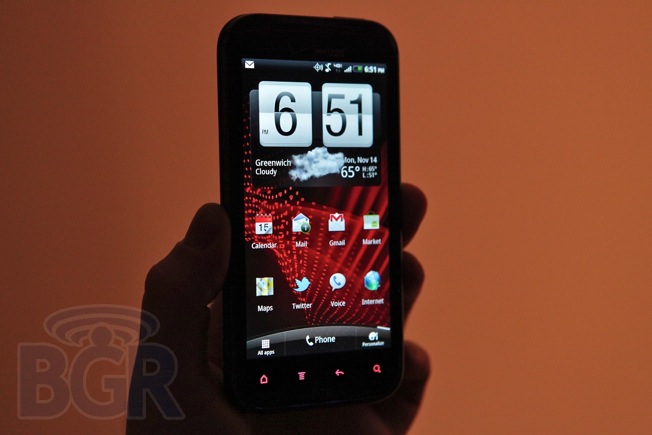
Verizon Wireless has not one but three powerhouse 4G LTE smartphones lined up for the holidays, and the HTC Rezound is one of them. Launching right after the Motorola DROID RAZR, the HTC Rezound takes things to another dimension, both visually and sonically. With an amazing 4.3-inch 720p HD display, a fast 1.5GHz dual-core processor, Beats-enhanced audio and other competitive specs in a solid package, is the HTC Rezound the 4G smartphone to beat this holiday season? Read on to find out how this phone shapes up against the DROID RAZR and Galaxy Nexus.
Hardware / Design / Display
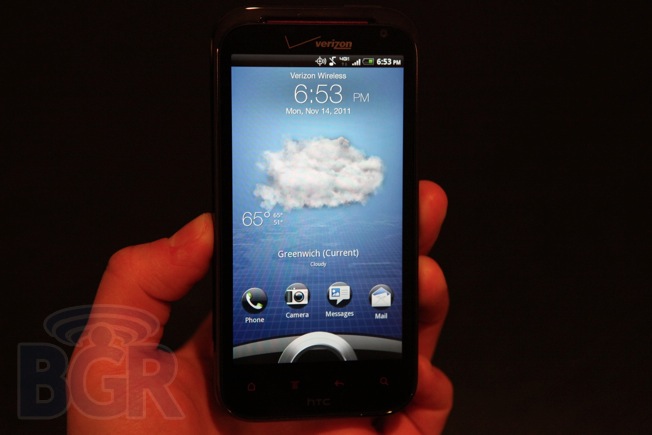
The HTC Rezound features all the latest lust-worthy pieces that fit together to make up any smartphone-lover’s ideal puzzle: specs include one of the first 720p HD displays, a fantastic 8-megapixel backside-illuminated camera complete with support for full 1080p HD video capture, a 720p HD front facing camera, an incredibly powerful 1.5GHz dual-core Snapdragon processor, and of course, support for Verizon’s 4G LTE network.
I love the HTC Rezound’s identity and personality. It’s a perfect complement to the red and black branding shared by both Verizon Wireless and Beats. Underneath the battery cover, the phone’s internals are displayed in, you guessed it, a translucent red plastic case, giving the phone an extra detail that only HTC devices have.
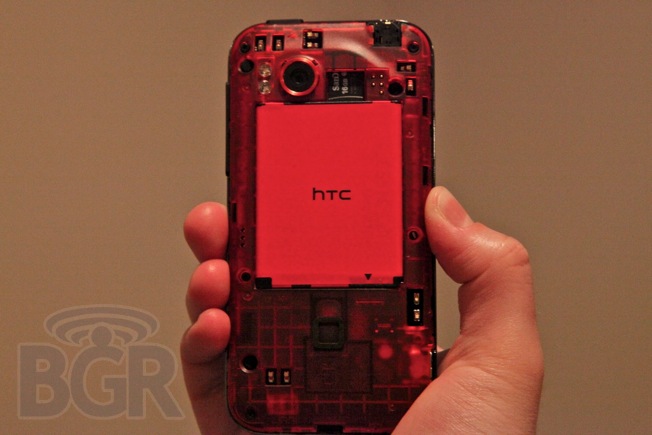
Let’s focus on the central feature of the HTC Rezound, and as much as Jimmy or Andre would want you to believe it’s the Beats audio processing features, it’s actually the display. The 4.3-inch 720p display on the Rezound is nothing short of stunning. It’s easily the best display I have ever seen on a mobile device besides the iPhone 4/4S. The screen on the HTC Rezound is the best screen on any current Android device, and completely annihilates the Motorola DROID RAZR’s PenTile display, though I’m interested to see how the Rezound lines up against the Galaxy Nexus.
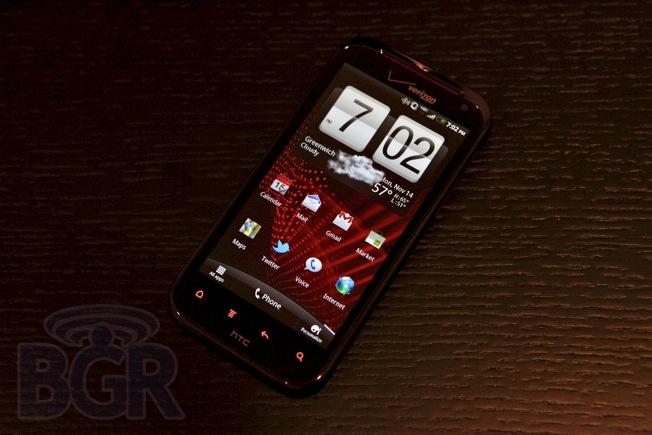
Looking at the phone, you’ll see the sinister red-tinted Android menu keys sitting right below that gorgeous display. While it’s a bit unsettling at first, that vivid red color shining through the buttons lets you know that this isn’t just a Verizon device, but a Beats device as well.
There’s a gun metal polished bezel around the entire phone that’s cradled in a soft-touch rubber back casing. On the right side you’ll find a volume rocker button, and on the left side you’ll find the phone’s MHL port that lets you use a microUSB connector or mini-HDMI out cable, along with a secondary microphone for noise cancellation. On top is a 3.5mm headset jack and a power/lock/unlock button. Around back is a dual-LED flash, the 8-megapixel camera sensor and a speaker etched out perfectly amid the ridged design of the back battery cover.
As far as the feel of the device goes, it’s much more thoughtfully designed than the Motorola DROID RAZR. The phone fits very well in the hand, and even though it’s almost twice as thick as the RAZR, it’s still infinitely more comfortable to hold and use thanks to the tapered edges and narrower case.
Software
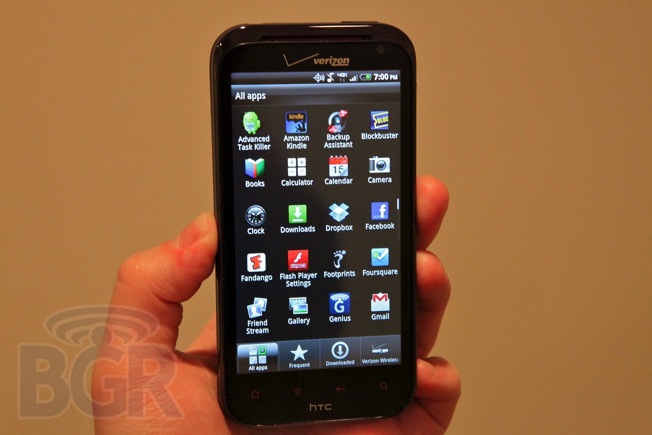
The HTC Rezound runs HTC’s latest Sense 3.5 user interface, layered on top of Android 2.3.5 Gingerbread. While HTC announced that the Rezound would be getting an upgrade to Android 4.0, it’s a pretty tough sell thrown up against the Samsung Galaxy Nexus that should launch within a week or so.
HTC Sense 3.5 is almost identical to HTC Sense 3.0, adding minor enhancements to the interface like the addition of an “All apps” label now included on the home screen at the bottom of the display as part of the arc. I go back and forth on HTC Sense and for the most part, and I appreciate a lot of the innovation from HTC in the early days of Android, especially starting with the HTC Hero. Sense now introduces more problems that it solves for me, though. While it is cohesive and very well designed, it almost offers too much customization now — so much so that the user may not even discover much of its capabilities because it takes so long to dig through everything. I’d run with a stock Android interface any day of the week.

I have also noticed many, many icons, and images that haven’t been updated to support the new HD resolution of the display. That’s an attention to detail that shouldn’t have been skipped over. If you’re going to customize the Android interface and modify stock elements of the operating system, it’s only right that you do this throughout the entire phone, and HTC didn’t do that. The status bar, for instance, is a mashup of high resolution and low resolution graphics. The battery icon is crisp but the signal bars aren’t. The silent ringer icon looks great but the GPS icon does not. Also, due to the fact that almost no app developers planned on a display of this resolution being released at this time, most app icons from apps you download look pixelated and blurry.
Another irritating thing about HTC’s Sense interface is the 3D carousel of app home screens. The phone comes with seven home screens, way more than I’d like. While HTC finally includes the ability to delete and reorder them, when you flick through your homescreens, the phone still displays them in a carousel as if there were seven. So, if you have two or three home screens, the phone will spin in a circle that’s only 25% full. It’s just odd, and it wasn’t well thought out at all.
Beats Audio / Headphones
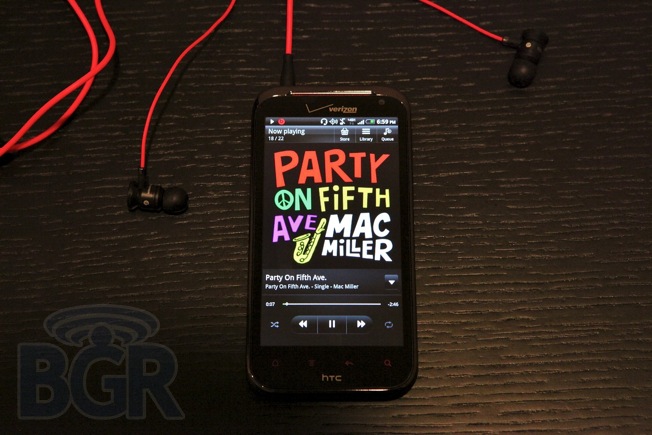
The Beats headphones that the HTC Rezound ships with are very good. In fact, they are probably the best bundled headphones I’ve ever used. Music sounds full, heavy on the low end, and clear on the top end even when disabling the Beats audio mode on the handset or using the headphones with other devices.
I’m just not sold on this Beats thing, in terms of the software. If Beats as a product existed solely as hardware, and now is coupled with software processing (EQ) as a selling point, well, I’m not sure I see the advantage of a small increase in audio reproduction. If anything, the Beats software processing amplifies audio, and adds a present equalization that’s meant to make the track sound louder, knockier and fuller. This is artificial, though, and something audio purists won’t appreciate.
Another issue? Beats audio just flat out doesn’t work with many third party music apps, so it becomes a non-factor in many cases.
Phone / Battery / Speaker
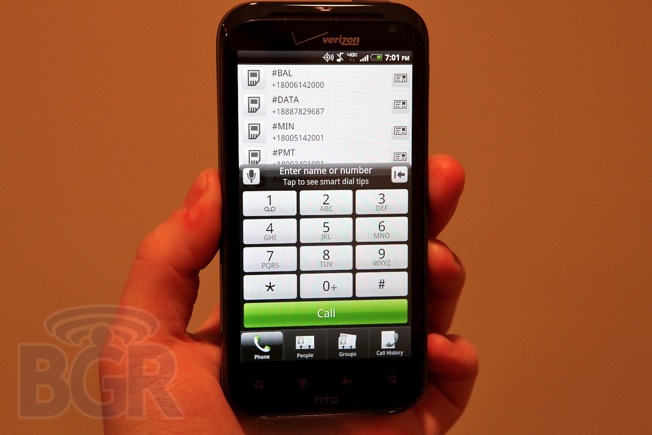
Voice calling on the HTC Rezound is reasonably good. Callers sounded a little robotic to me, and would sometimes cut in and out. Noise cancellation worked very well though, with background noise almost completely eliminated and unnoticeable to callers on the other end of the line. The speaker on the Rezound projects nicely, especially when on a flat surface like a desk or coffee table. I’m still not a fan of the actual phone app on HTC Sense devices, however.
As far as the battery, standby mode has been excellent. With normal usage on and off throughout the day, the phone and its 1,620 mAh battery seemed to make it just fine as long as I remembered to recharge when I got home. Even when putting the phone under pressure with constant 4G LTE web browsing, email, video playback and continuous music in the background, the Rezound held up very well.
Conclusion
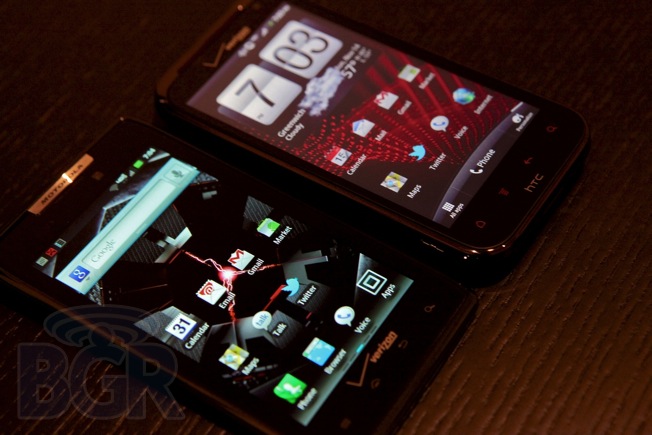
I feel like I’m taking crazy pills. On one hand, this is practically the same phone I’ve reviewed countless times, in a different shell, with slightly improved specs. On the other, it feels like a completely different animal.
The red and black color scheme, an amazing 720p HD display, Beats audio and extremely fast performance come together in an ergonomic design to create a fantastic finished product. While almost comical at this point, the HTC Rezound is now my favorite Android device in the world, besting the Motorola DROID RAZR, which bested the Galaxy S II. That might be short lived, though, as the Samsung Galaxy Nexus — the first Android 4.0 smartphone — is slated to hit shelves in the next week or two. In the meantime, the HTC Rezound offers up some of the best specs and one of the most complete smartphone packages I have ever seen.






